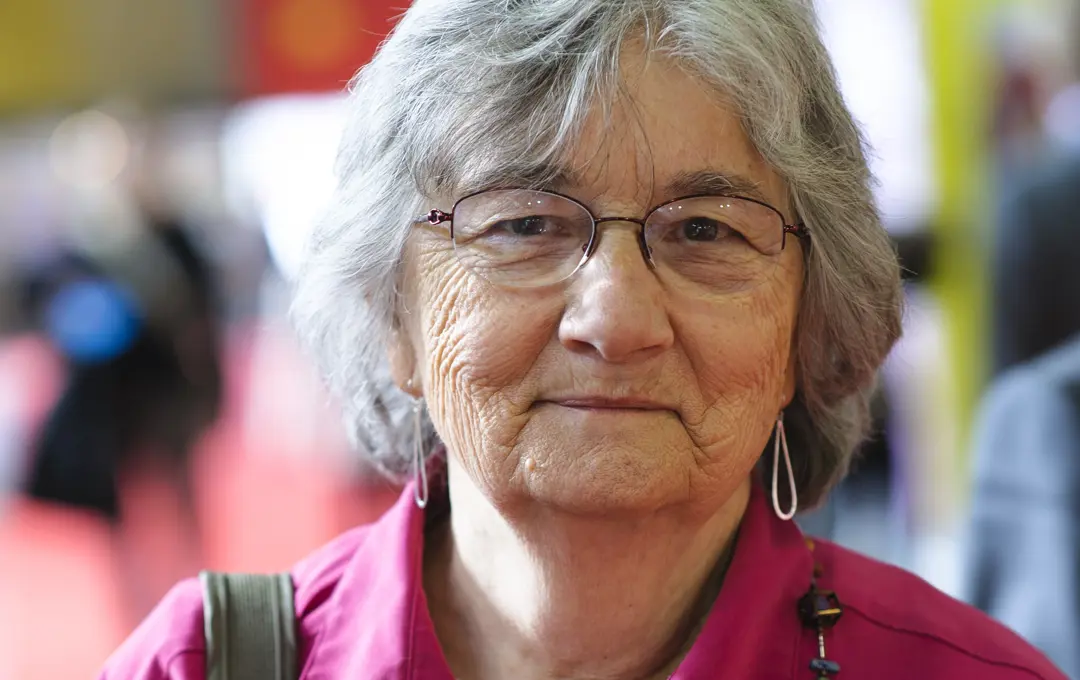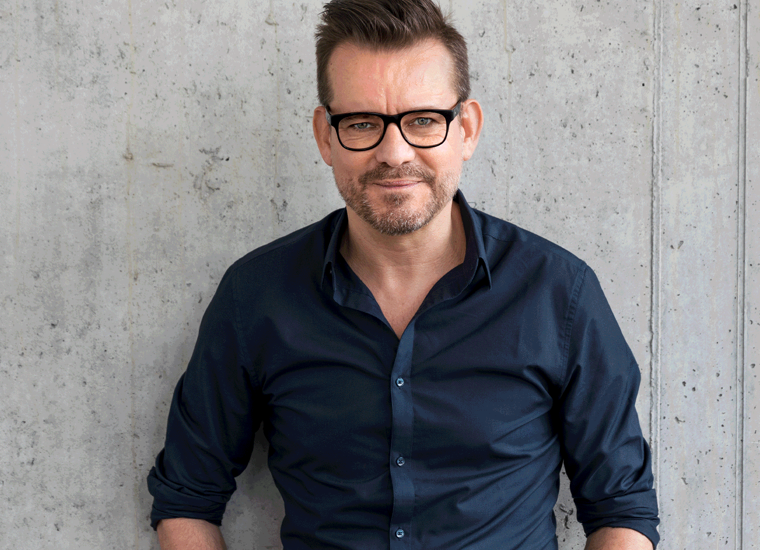Brilliant psychologist gets right under the skin
Katherine Paterson is the author of more than 30 books, including 17 novels for children and young people. She is best known for the book “Bridge to Terabithia” for which she has been awarded several times. Her novels deal with important and sometimes difficult issues such as broken families and children at risk. Nonetheless, hope and courage also feature strongly in her works.
 Photo: Stefan Tell
Photo: Stefan TellQuick facts
The jury’s motivation
Katherine Paterson is a brilliant psychologist who gets right under the skin of the vulnerable young people she creates, whether in historical or exotic settings, or in the grim reality of the USA today. With a deft aesthetic touch she avoids simple solutions, building instead on the inner strength and courage of her main characters.
Katherine Paterson grew up in China and trained as a missionary in Japan before beginning her writing career in America with a number of religious textbooks. Paterson's work has included picture books and books for the very young, often based around fairytales and myths, yet it is as a writer of novels for young readers that she is best known. Often set in historical contexts in Japan, China or the US, yet frequently too against a contemporary American backdrop, these novels deal with important and sometimes difficult issues such as broken families and children at risk. Nonetheless, hope and courage also feature strongly in her works: her main characters are often vulnerable, slightly odd children, a projection of certain aspects of her own childhood.
Her works have been translated into various languages, including Dutch, French, Finnish, German, Hungarian, Italian, Norwegian, Portuguese, Russian, Spanish and Swedish. She has been the recipient of a number of awards, both in her native USA and internationally. These include the Hans Christian Andersen Award in 1998 in recognition of her lifetime contributions to children's literature, the 1986 Grand Prix des Jeunes Lecteurs for Bridge to Terabithia, and the 1977 National Book Award for Children's Literature for The Master Puppeteer.
In 2010 Katherine Paterson was named National Ambassador for Young People's Literature.
A mild air of humour and confidence
This text was written in 2006 by members of the award jury.
The fact that writers draw on their own experiences is self-evident, not least in the case of Katherine Paterson, who in various articles and interviews has explained that her main characters, as in her breakthrough novel Bridge to Terabithia (1977), are basically projections of herself.
Born into a missionary family in China in the 1930s, Katherine Paterson regarded herself as something of a "weird child", a natural consequence perhaps of the rootlessness that shaped her upbringing. With her family constantly on the move, she often felt different and "wrong" – a quality shared by almost all the characters in her work. In her choice of distinctive main characters and her interest in the psychological interplay between family members, she aligns herself with the Anglo-American tradition of books for girls exemplified by Frances Hodgson Burnett, Louisa M. Alcott and L. M. Montgomery, but in a distinctly modern guise.
Paterson herself trained as a missionary. After four years in Japan she returned to the USA in the early 1960s and began her literary career as a writer of religious textbooks. Her debut in fiction came 1973 with a novel for young readers, The Sign of the Chrysanthemum. Since then she has produced picture books and books for the very young, often interwoven with fairytales and myth, yet it is as a writer of novels for young people that she has achieved international acclaim, receiving numerous awards all over the world.
Roughly half of her novels for young readers are historical in context, set either in Japan, China or 19th century America. The others depict present-day American society, with its broken families and underprivileged children – themes that she also touches on in her historical novels.
Katherine Paterson does not shy away from difficult subjects. Death often plays a key role: the death of the ten-year-old Leslie is anticipated throughout Bridge to Terabithia, and in Flip-Flop Girl (1994) the death of Vinnie's father from cancer sets in motion an often harsh course of events. The father's death as a soldier in Vietnam is the starting point for Park’s Quest (1988), in which the young Park, like a latter-day Parsifal, sets out to discover the circumstances of his father's fate about which his mother has lied to him.
Inadequate parents, deceitful mothers and absent fathers, along with insensitive social workers, bullying classmates, eccentric elderly relatives and an unsatisfied desire for a happy family mark out the main characters that Paterson has created. These vulnerable children often struggle too with the responsibility of taking care of younger siblings.
But like the master storyteller she is, Paterson knows the importance of showing that burdens can be lifted. Ever aesthetically aware, she steers clear of the simplified solutions that happy endings so often provide. Instead, her principal characters gain in strength and courage through shouldering their responsibilities. As a reader one believes in their future despite all that has happened, feeling a little brighter in spirit when one puts down the book.
The abandoned heroine of the The Great Gilly Hopkins (1978) finds, with time, the love she has always lacked, although not in the places she had been looking. And in Flip-Flop Girl it is the strangely attired yet unselfish character of the title who comes to Vinnie's salvation when everything around her is failing and threatening to fall apart. The pattern recurs in The Same Stuff as Stars (2002), in which the reclusive, outcast stargazer, her neighbour, is the one who brings light and meaning to Angel's young life. And like a beam of starlight, a mild air of humour and confidence falls on Angel and her like, children who have been forced all to soon to become little adults.
Katherine Paterson has also remarked that she actually writes the same book over and over again, and to a certain extent this is true. In many stories we encounter her typical characters and the people who support them, their "saviour witnesses", yet she displays a wide range of subject matter. Her first major novel, Bridge to Terabithia, portrays an intense friendship verging on love between two children and the grief the boy has to cope with in order to move on. And in her second major work, Jacob Have I Loved (1980), the central theme is the rivalry between twin sisters.
She also sets her books in a variety of times and places. In Terabithia we are in a rural setting of the 1970s, in Jacob, a fishing community in Chesapeake Bay during the Second World War. Lyddie (1991) takes place around 1840, portraying in the true spirit of Dickens the joylessness of exploited factory girls.
Often exhilarating, Katherine Paterson's novels transport us to a wide variety of periods and civilisations. Yet for the most part they share a strong focus on the central figure in the drama, closely bound to the young person through whose eyes we experience the world. In many of her novels the author creates an intriguing ambivalence through her distinctive narrative style: the text states one thing whereas the reader recognises an implicit message to the contrary.
Paterson is also firmly rooted in the poetic tradition. Her prose, clear and simple yet rich in imagery, quotations and allusions, is rhythmic and melodious, presenting a real challenge to any translator. Astrid Lindgren once quoted Schopenhauer's recipe for writing: one uses ordinary words and says extraordinary things. Paterson certainly does this, in the true spirit of her illustrious predecessor.
I knew by the chill that went through my body that it meant war. All my magazine reading and overheard remarks fell at once into a grotesque but understandable pattern.

Discover our laureates
The Astrid Lindgren Memorial Award is awarded to authors, illustrators and narrators, but also to people or organizations that work to promote reading.
Find out more about the laureates
Children have the right to great stories
To lose yourself in a story is to find yourself in the grip of an irresistible power. A power that provokes thought, unlocks language and allows the imagination to roam free. The Astrid Lindgren Memorial Award was created in 2002 by the Swedish government to promote every child’s right to great stories.
Find out more about the award